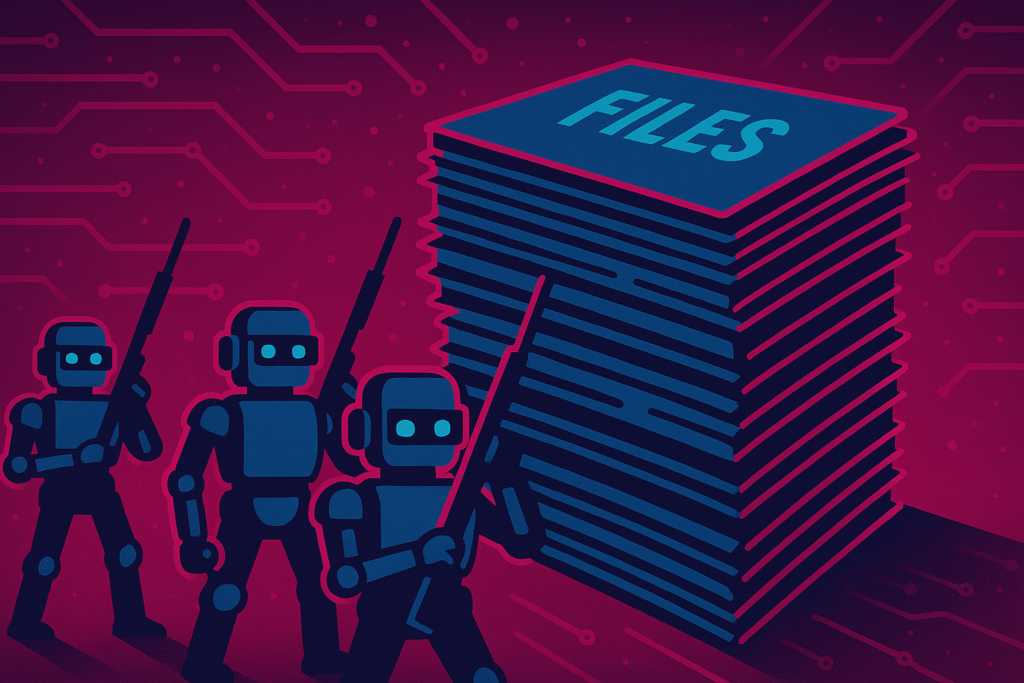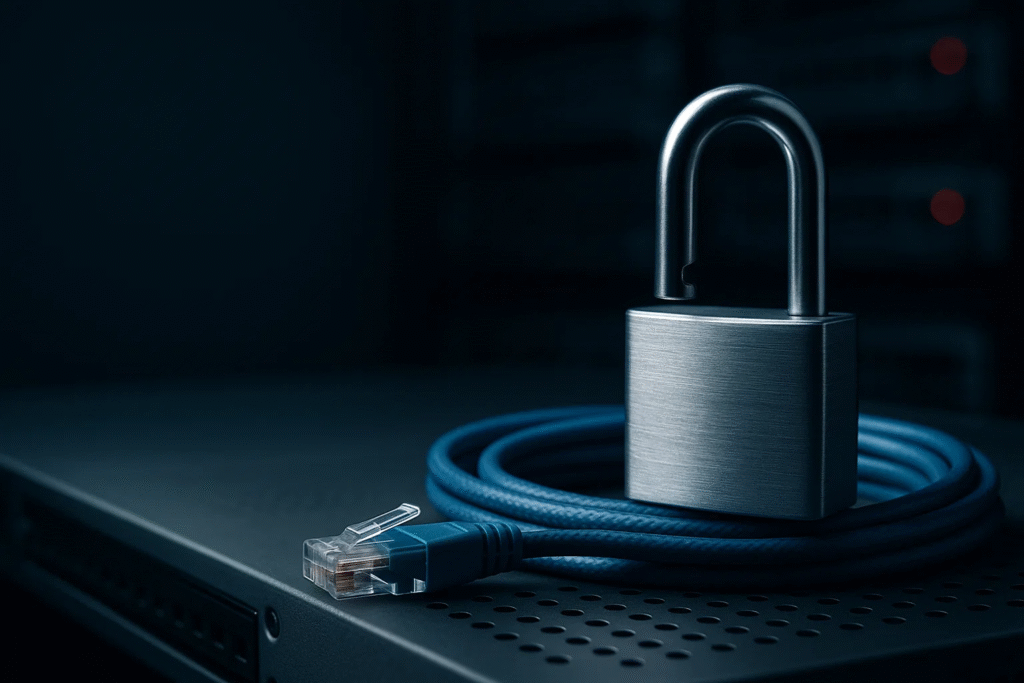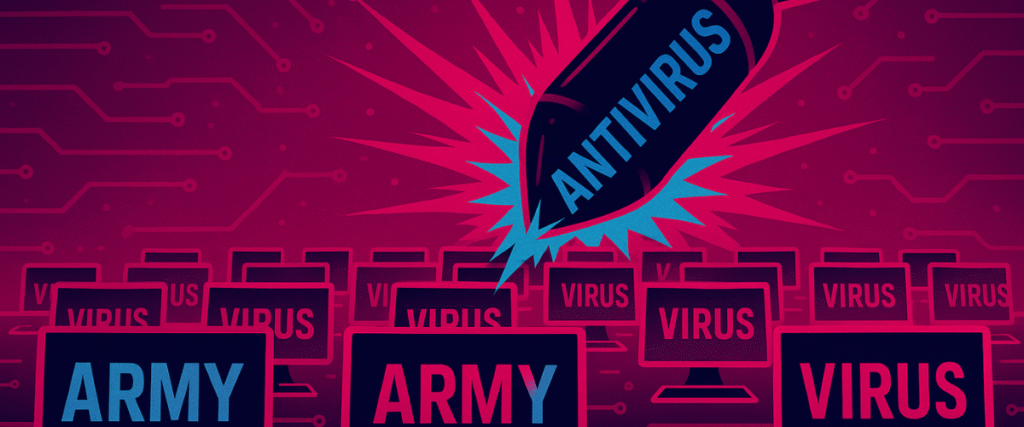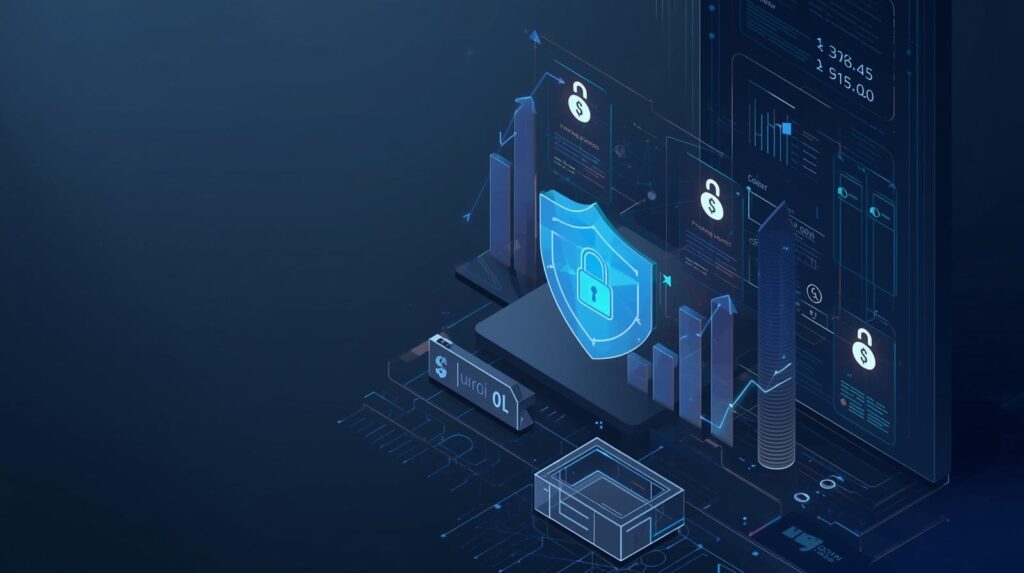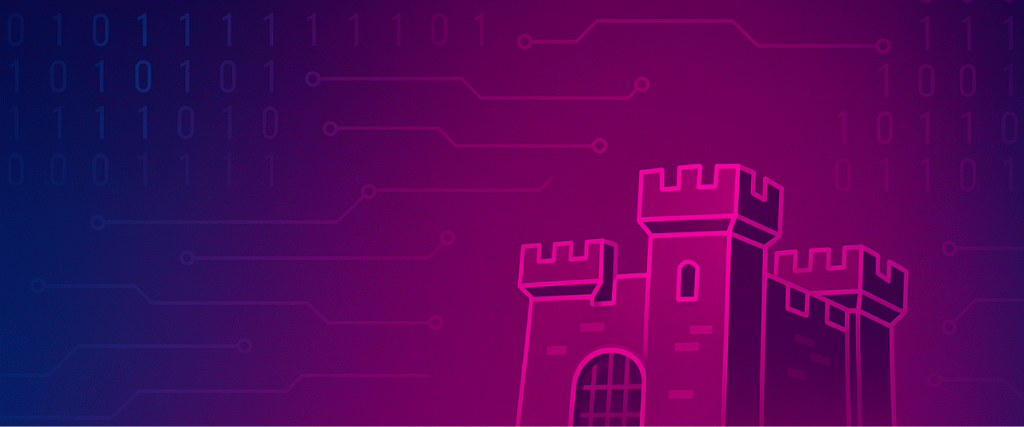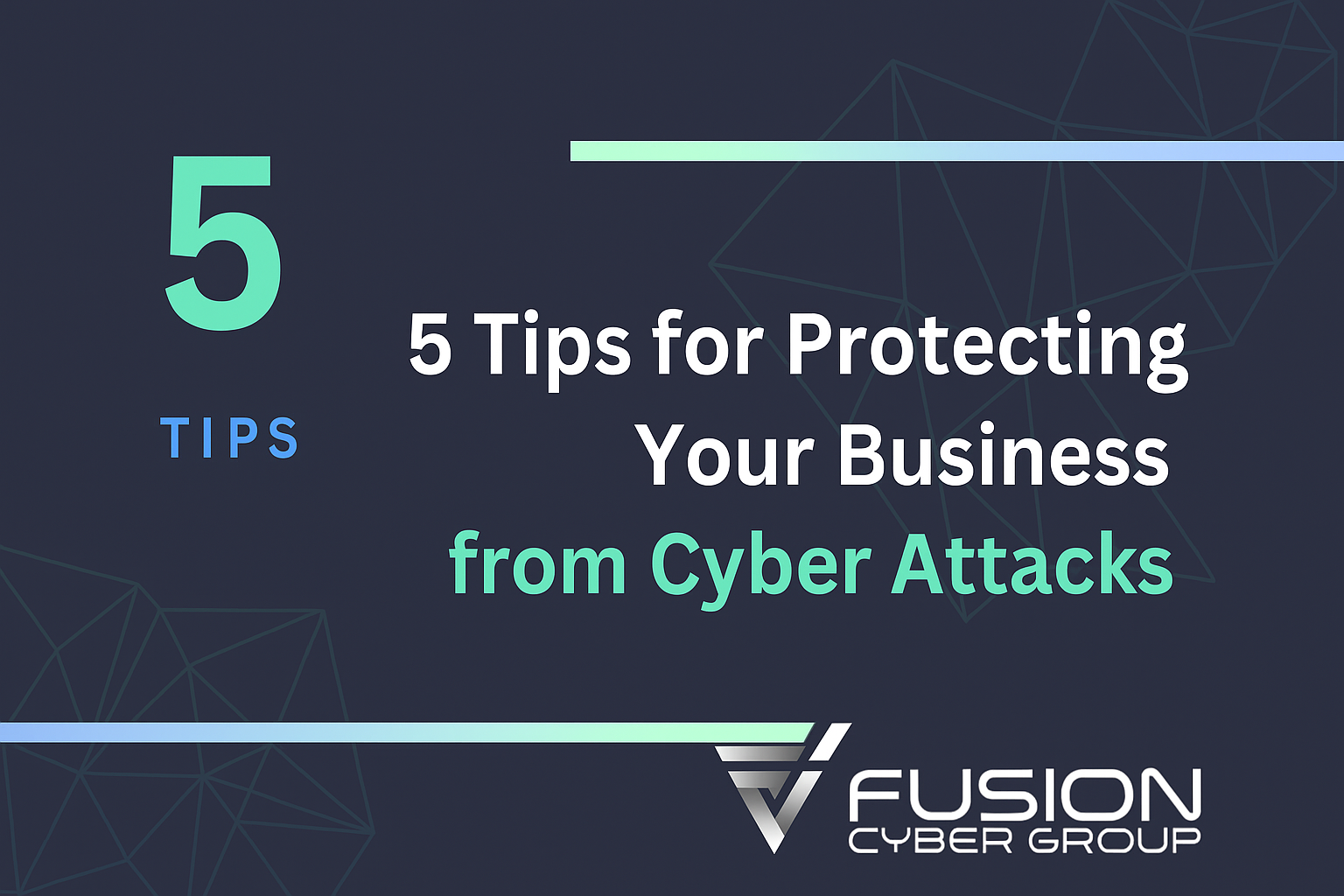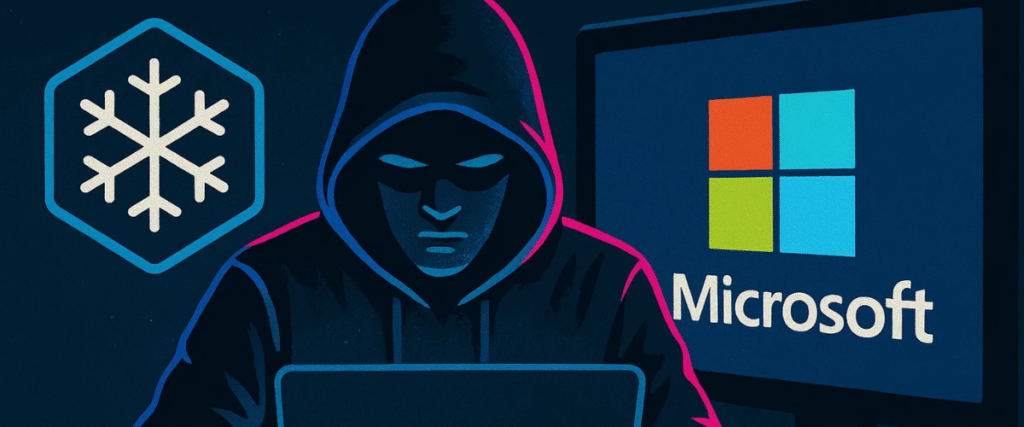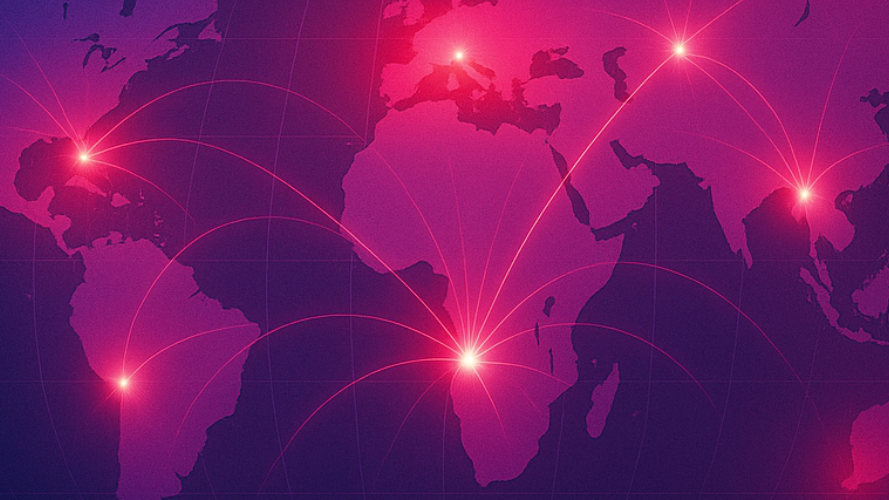In the ever-evolving landscape of cybersecurity, the perimeter layer serves as the first line of defense against external threats. Just as a fortress relies on its walls to protect its inhabitants, your network depends on this layer to safeguard sensitive information from untrusted external networks. In this article, we will explore the key implementations of the perimeter layer and how they contribute to a robust cybersecurity strategy.
Most threats still reach you through internet‑facing edges. A modern perimeter—NGFW, WAF, DNS filtering, DDoS controls, and identity‑aware access (ZTNA)—stops attacks before they touch your people and data.
Why Is the Perimeter Layer Important?
A strong perimeter reduces the number of threats that ever reach your staff, devices, or core systems. It is the filter, inspector, and policy enforcer that decides what can talk to you from the Internet—and on what terms. For Canadian SMBs that run lean teams, this is about containing complexity: place smart controls at the edge so you don’t have to clean up as many messes inside. When the perimeter is healthy, your help desk sees fewer ransomware cleanups, finance gets fewer impostor emails, and your leaders sleep better because exposure is lower and predictable.
Think of the perimeter as several smaller “walls” that work together: a next‑gen firewall (NGFW) understands applications and users, not just ports; a web application firewall (WAF) shields your public websites and portals; DNS filtering blocks malicious destinations before connections happen; DDoS controls soak up floods aimed at your brand; and identity‑aware access (Zero Trust Network Access, or ZTNA) only opens the door to specific apps for verified users and healthy devices. Each piece removes a class of risk. Together they change outcomes.
Modern attackers rarely start with a full frontal assault. They probe for an exposed remote desktop, a forgotten test site, a misconfigured VPN, or a vendor login that was never disabled. They send phishing links that bypass basic email filters, spin up domains that look like a supplier, or try credential stuffing using passwords from old breaches. A modern perimeter assumes all of this and fails safely: if a user clicks a risky link, DNS policy blocks it; if a scanner hits your site, the WAF rate‑limits and challenges it; if a VPN gateway sees strange behaviour, it asks for MFA again or locks down the session.
From a business perspective, the perimeter is where you can prove improvement. You can count blocked connections, quarantined payloads, and time‑to‑respond. You can measure fewer public‑facing services, fewer stale rules, and lower phish‑induced access attempts. Those numbers ladder up to risk reduction that boards and insurers care about.
Finally, Zero Trust doesn’t kill the perimeter—it multiplies it. Instead of one big moat, you get many small, policy‑driven guardrails at your office, cloud, endpoints, and even browsing layer. That shift lets you shrink blast radius, support hybrid work, and keep aligned with privacy obligations under Canadian law by filtering only what you need and logging what matters.
Read More about the 7 Layers of Cybersecurity
Key Implementations of the Perimeter Layer
Next‑Gen Firewall (NGFW). Your NGFW should recognise users and apps, not just IPs and ports. That means inspecting traffic up to Layer 7, applying category‑based controls (e.g., block remote admin tools, restrict P2P), and enforcing geolocation and reputation blocks. Turn on automatic threat‑intel updates and create a quarterly rule review so temporary exceptions don’t linger. Where privacy permits, enable TLS inspection for high‑risk categories with clear exceptions for banking and healthcare.
Web Application Firewall (WAF) & API Protection. Anything customers, partners, or staff reach over the Internet deserves a WAF in front of it—public sites, sign‑in pages, client portals, and APIs. A managed WAF stops common exploits (SQLi, XSS), throttles bad bots, applies virtual patches while developers fix code, and adds account‑takeover protections like credential‑stuffing detection and multi‑factor step‑up. Pair the WAF with a CDN to absorb bursts and reduce latency across Canada and abroad.
Intrusion Prevention (IPS). IPS looks for known exploits and suspicious behaviours, then blocks or isolates automatically. Start with balanced policies, then tune over two to three weeks so you keep detections high and false positives low. Send all events to your SIEM/XDR so analysts can correlate a minor perimeter alert with endpoint or identity signals.
Secure DNS & Web Filtering. Most attacks need a domain name. A DNS firewall blocks malicious and newly‑registered domains before the connection forms. Add a secure web gateway (SWG) for URL category controls and time‑of‑click analysis. Enforce DoH/DoT on corporate devices, log queries for 12–18 months for investigations, and set SafeSearch for staff who don’t need unrestricted results.
DDoS Protection. Volumetric attacks can take you offline or mask other intrusions. Use always‑on scrubbing for network floods and application‑layer protections at the CDN/WAF for HTTP floods. Keep a simple cutover runbook: who to call, how to reroute DNS, and what to tell customers.
Remote Access: VPN Hardening and ZTNA. VPNs are common but broad—once connected, users often see whole subnets. Harden them with MFA, patching, device posture checks, and tight split‑tunnelling (or none). Plan a phased migration to ZTNA, which grants per‑app access based on user, device health, and context (location, time, risk). ZTNA reduces lateral movement risk and simplifies audits.
Segmentation & Micro‑DMZs. Separate guest, IoT, and servers; restrict east‑west traffic; and place Internet‑facing systems in a DMZ with limited egress. Identity‑based segmentation lets you define access by role instead of only by VLAN.
Email/Web Edge Controls. Layer your email gateway with attachment detonation, URL rewriting, impersonation detection, and outbound DLP. Add browser isolation for finance and executives who handle payments and contracts.
Logging & Response. Ship NGFW, WAF, DNS, VPN/ZTNA, and email logs to a central platform. Alert on brute‑force, impossible travel, data egress spikes, and DNS tunnelling. Tie alerts to playbooks so responders can block, isolate, or force re‑auth quickly.
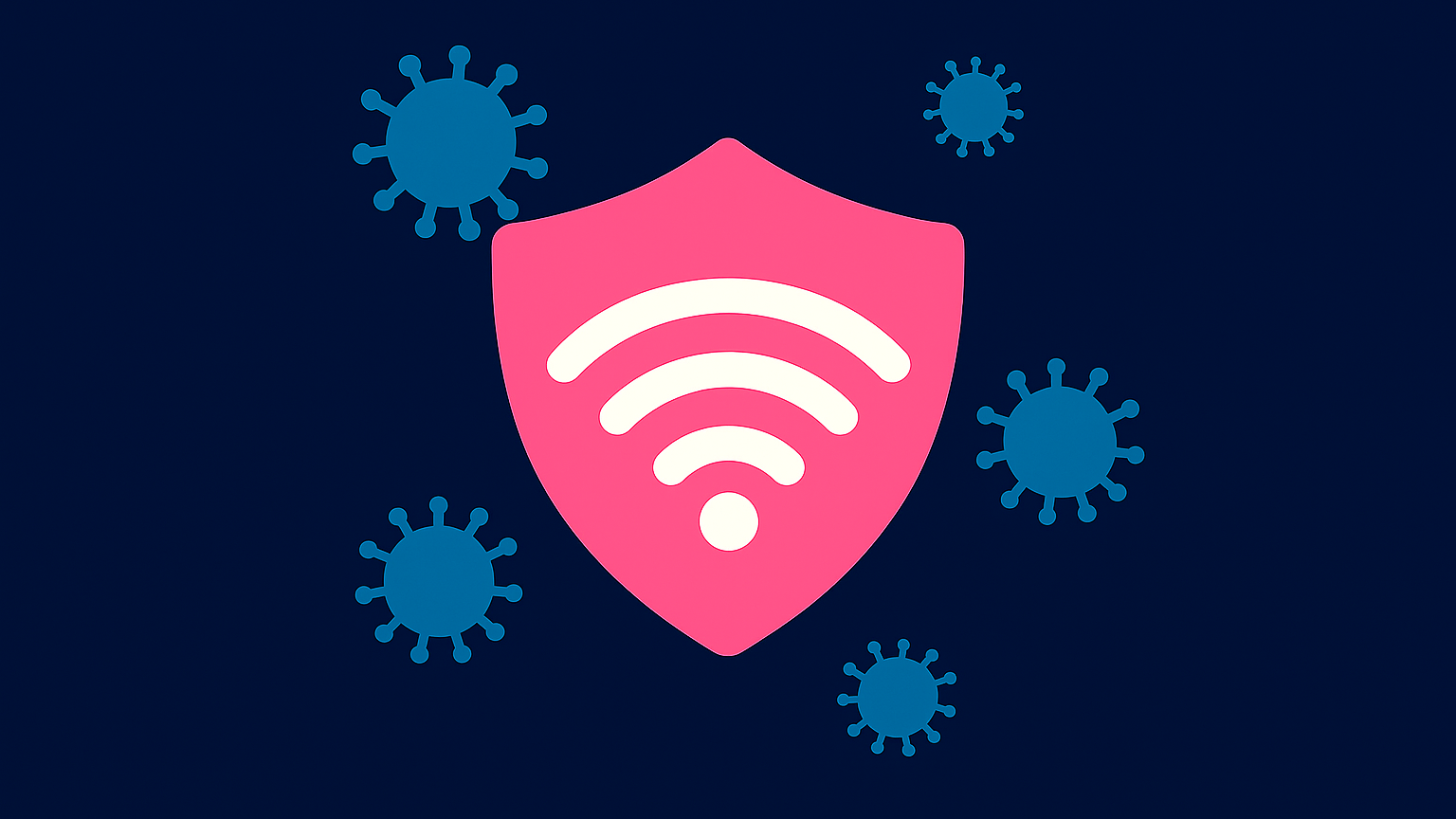
Public Wi‑Fi reality (remote & hybrid)
Public networks are convenient and risky. Threats include evil‑twin hotspots that mimic café SSIDs, captive portals that inject scripts, ARP spoofing that hijacks traffic, and open Wi‑Fi where anyone can sniff metadata and try session hijacking. The answer is not to ban mobility—it’s to design for it so your people can work safely from airports, hotels, ride‑shares, and client sites.
Start with identity and device health. Require MFA for all remote sessions and verify device posture before access: disk encryption on, EDR active, patches recent, and no high‑risk processes detected. Use ZTNA to present only the apps a user needs, not the whole network. If VPN remains in play, make it always‑on with a kill switch so traffic can’t silently fall back to unsafe paths.
Control where traffic goes. Enforce DNS filtering on endpoints—even off your network—so malicious domains are blocked everywhere. A secure web gateway adds category controls and time‑of‑click URL inspection, catching weaponised links that bypass email filters. Consider browser isolation for roles targeted by fraudsters (finance, executives, procurement) so risky sites render in a sandbox, not on the device.
Coach practical habits. Teach staff to verify the network name with the venue, avoid reusing captive portal credentials, and prefer phone tethering when signals allow. Encourage people to deny unexpected MFA prompts and to report them immediately. Remind travellers that charging via random USB ports can be risky; carry a data‑blocking adapter. For videoconferencing in public spaces, use headsets and be mindful of screens that show client data.
Tighten mobile and BYOD policy. Use mobile device management (MDM) or endpoint management to separate work data from personal apps, enforce screen locks, and enable remote wipe. For contractors or BYOD, limit access to virtualised apps or published browsers via ZTNA so data never lands on unmanaged endpoints. Log remote sessions for audit and incident response.
Finally, plan for failure. If a laptop is stolen in a café, you should be able to revoke tokens, wipe the device, and invalidate credentials within minutes. Keep a traveller checklist—what to pack (security keys, approved hotspot), what to avoid (random USBs), and who to call 24/7 if something feels off. Mobility is safe when controls are assumed, automated, and measured.
What “Good” Looks Like (Maturity Snapshot)
Foundational. You have a managed NGFW at each site, site‑to‑site tunnels are encrypted, and default‑allow rules are gone. DNS filtering and web controls protect all users, whether in office or remote. VPN is enforced with MFA and logs stream to a central platform where you can search events during an incident. Firewall rules are labelled with an owner and a business purpose, and temporary exceptions have expiry dates. External exposure is known: you can list public IPs, open ports, and Internet‑facing apps on demand.
Advanced. You’ve placed a managed WAF in front of all public apps and enabled account‑takeover protections. ZTNA is piloted for sensitive apps and expanding. Segmentation separates guest, IoT, and server zones with explicit east‑west controls. IDS/IPS is tuned; false positives are down and precision is up. You’ve added always‑on DDoS scrubbing and a documented cutover playbook. Browser isolation and outbound DLP protect roles that handle funds or contracts. You measure posture—not just boxes turned on—with monthly leadership reports.
Optimal. You operate a SASE/SSE model: ZTNA, SWG, CASB, and FWaaS follow users everywhere; the legacy VPN is retired. Identity‑based segmentation governs access regardless of network. Automated playbooks isolate devices and revoke tokens when risk rises. Attack‑surface management scans continuously and feeds issues into IT workflows with SLAs. Third‑party access is brokered through ZTNA with short‑lived credentials and strong audit trails. Your security program proves value with fewer incidents, shorter outages, and lower insurance friction.
How to assess yourself. Ask: Do we know every Internet‑facing asset? Can we see and search logs for 12–18 months? How many broad “allow any” rules remain? What % of users are on ZTNA? Are high‑risk roles protected with browser isolation and phishing‑resistant MFA? Is there a tested DDoS plan? Honest answers map you to the right rung and the next two steps.

30–60–90 Day Plan (Right‑Sized for SMBs)
Days 1–30 (Stabilise & See). Inventory everything exposed to the Internet: domains, public IPs, cloud apps, remote gateways, third‑party portals. Use an external scan and a manual checklist to catch strays (staging sites, forgotten subdomains). Pull your firewall configuration into version control and remove stale objects and unused rules. Turn on DNS filtering for all users and configure logging for NGFW, DNS, VPN/ZTNA, and email to one place. Enforce MFA everywhere remote users authenticate, rotate shared admin credentials, and document a simple incident bridge (who joins, in what order, with what authority).
Days 31–60 (Harden & Segment). Enable IDS/IPS in block mode on the NGFW for high‑confidence signatures; alert‑only for the rest while you tune. Stand up a WAF in front of public apps and enable bot management and login protections. Create VLANs for guest and IoT, restrict east‑west access, and tighten egress to only what each zone needs. Launch a ZTNA pilot for two to three critical apps (e.g., finance, remote admin portals) with device posture checks and short session lifetimes. Draft a DDoS runbook and test a basic cutover with your provider.
Days 61–90 (Modernise & Measure). Expand ZTNA beyond the pilot; reduce or eliminate VPN split‑tunnelling. Add browser isolation or stronger web controls for high‑risk roles. Integrate perimeter alerts with SOAR playbooks to auto‑isolate devices or force re‑authentication. Finalise KPIs and a one‑page monthly report to leadership. Schedule quarterly firewall/WAF reviews and an annual external exposure assessment. Capture lessons learned and update policies so changes stick.
Owners & Artefacts. Internal IT leads asset inventory and app mapping; Fusion Cyber, as your MSSP, configures NGFW/WAF/DNS, operates the SOC, and runs the ZTNA rollout. Executives approve risk‑based policy changes and receive KPIs. Artefacts include a live asset register, rule review logs, ZTNA app catalogue, DDoS runbook, and an incident communications template.
Metrics that show real risk reduction
Perimeter‑blocked threats. Track counts and trends by type (malware, exploit, command‑and‑control, DDoS events) and by control (NGFW, WAF, DNS, email). The number should not be a vanity metric—pair it with exposure (open ports/services) so leadership sees both fewer attempts succeeding and fewer doors available.
Blocked malicious DNS queries per user per month. DNS is a sensitive leading indicator. Normalise by user count to compare across months. A downward trend after enabling DNS filtering and awareness training is a strong signal that risky clicks are less common.
ZTNA adoption. Measure the % of users and apps migrated from broad VPN to per‑app ZTNA. Add context: sessions denied by posture check, sessions requiring MFA step‑up, and time‑to‑contain a suspicious session. Increased adoption should coincide with fewer lateral‑movement investigations.
MTTD/MTTR at the edge. Mean Time to Detect and Respond for perimeter events is the speed dial for your SOC. Define when the clock starts (event created) and stops (containment action executed). Automations—blocking an IP, forcing re‑auth, isolating a device—should lower both numbers quarter over quarter.
External exposure count. Keep a simple figure: number of public services and open management ports. The target is a steady decline, with clear business justifications for what remains. Tie exposure back to revenue (e.g., a client portal) so the tradeoff is explicit.
Reporting cadence. Present a one‑page monthly brief with three trends, one exception, and one decision asked of leadership. Colour‑code thresholds, annotate spikes with explanations (e.g., new campaign attracted bot traffic), and keep individual user data private—focus on systems and processes.
The biggest perimeter risks
Misconfiguration. Most incidents aren’t zero‑days; they’re “oops” moments—an exposed admin portal, an allow‑any rule left from a project, or TLS inspection applied to banking sites causing breakage and risky workarounds. Institute rule owners, expiry dates, and change reviews.
Exposed remote access. Public RDP or unpatched VPN gateways are still common entry points. If third parties need access, broker it through ZTNA with short‑lived credentials, device checks, and full audit trails.
Flat networks. Once an attacker gets a foothold, a flat network lets them roam. Segment guest, IoT, and servers; restrict east‑west, and monitor unusual internal flows.
Credential stuffing & weak MFA. If passwords re‑appear from old breaches, attackers will try them. Enforce SSO, strong MFA (prefer phishing‑resistant methods for finance/admin), and monitor for impossible travel and rapid login failures.
Shadow IT & unmanaged SaaS. Staff sign up for tools with good intent. Without visibility, data leaves controlled environments. Use CASB/SWG visibility and publish a small approved app catalogue.
DNS tunnelling & data egress. Attackers hide exfiltration in DNS or common ports. Alert on long domain queries, unusual query volumes, and unexpected destinations. Restrict egress from sensitive zones to only what’s needed.
Third‑party risk. Vendors and contractors often need access. Require ZTNA, strong MFA, and named accounts with clear off‑boarding. Log and review their activity like your own.
Read more about the 7 Layers of Cybersecurity
For a complete defence‑in‑depth view, the perimeter layer sits alongside six others in our series:
- Identity & Access. Who you are and how you prove it. MFA, SSO, conditional access, privileged access management. Perimeter policies lean on identity to decide who may reach which apps.
- Endpoint & Mobile. Laptops, phones, and servers. EDR, patching, disk encryption, and device posture feed ZTNA and VPN controls so unhealthy devices can’t reach sensitive apps.
- Application & API. Code, SaaS, and integrations. WAF and API gateways protect what’s public; secure software practices and secret management harden what’s inside.
- Data Protection. Backups, encryption, DLP, and retention. Perimeter egress rules and DNS/web filtering help keep data from leaving in the first place.
- Email & Collaboration. The front door for most attacks. Advanced filtering, impersonation defence, and user reporting complement perimeter controls to reduce click‑through risk.
- Resilience & Recovery. Backups, BCDR, and tabletop exercises. Even with a strong perimeter, you plan for failure to minimise downtime and cost.
We’ll link each article as it publishes so you can read end‑to‑end or dip into the layer you’re tackling next.

How Fusion Cyber Group Helps
Assess. We start with an outside‑in scan and a rapid config review to find exposed services, stale rules, and unguarded web apps. You get a short, prioritised list—what to fix now, what to schedule, and what to monitor.
Deploy. We implement or tune NGFW, WAF, DNS filtering, email protection, and ZTNA with clear naming, rule owners, and expiry for exceptions. For DDoS, we add managed scrubbing and a simple cutover playbook. Configuration is stored in version control and backed up.
Monitor. Our 24×7 SOC ingests logs from your edge (NGFW, WAF, DNS, ZTNA/VPN, email) and your endpoints/identity stack. We correlate signals, hunt for anomalies, and notify only when action is needed—no alert fatigue.
Respond & Recover. When something breaks bad, we isolate devices, force re‑authentication, block bad sources, and coordinate with your team. Fully onboarded clients benefit from our financially backed Cybersecurity Guarantee—incident response, containment, and business recovery at our expense.
Co‑managed, Canadian, and bilingual. We work alongside your IT team, keep data residency needs in mind, and provide English/French user comms and reports. You get monthly KPI briefings tied to business outcomes and audit‑ready artefacts for customers, insurers, and regulators.
Ready to modernise your perimeter? Get started at fusioncyber.ca/get-started/ or email info@fusioncyber.ca.
Final Thoughts
Firewalls still matter—but alone they’re not enough. A modern perimeter brings together NGFW, WAF, DNS filtering, DDoS protection, and ZTNA, with segmentation and always‑on monitoring to shrink your exposure and stop attacks early. For SMB leaders, the path is practical: stabilise what you have, add the few controls that change outcomes the most, and measure progress with simple KPIs your board understands.
If you prioritise just three moves this quarter, make them these: (1) enable DNS filtering and log it, (2) place a managed WAF in front of anything public, and (3) pilot ZTNA for two critical apps. Those steps lower risk fast, support hybrid work, and pave the way for a cleaner, simpler architecture next year. Pair technology with process—quarterly rule reviews, short incident bridges, and a clear DDoS playbook—and your team will feel the difference in fewer emergencies and clearer decisions.
Security should enable, not slow, your growth. When your perimeter is predictable and measured, you can adopt new SaaS, open new locations, and support more remote staff without adding constant firefighting. That’s the real ROI.
Featured links:
Zero Trust architecture overview
FAQ:
Do I still need a firewall if I adopt Zero Trust?
Yes. Zero Trust shifts trust to identity and device, but you still need edge controls to block commodity attacks, enforce egress, and capture forensic logs. Keep a managed NGFW for app-aware rules, add a WAF in front of any public app or portal, and turn on DNS filtering to stop malicious lookups before connections happen. Review rules quarterly, give every rule an owner/purpose, and expire temporary exceptions so “allow-any” holes don’t linger.
VPN vs. ZTNA—what’s right for my SMB?
Use both during transition; aim for ZTNA. A hardened VPN (MFA, patching, device checks, minimal split-tunnel) is fine short-term, but it grants broad network access. ZTNA grants per-app, least-privilege access based on user, device posture, and context—shrinking lateral movement and simplifying audits. Run a 90-day pilot for 2–3 critical apps, expand in phases, and retire broad VPN access as ZTNA coverage grows.
Is public Wi-Fi ever “safe” for remote workers?
Assume it’s untrusted—design for it. Require MFA and device-posture checks before access, and use ZTNA or an always-on VPN with a kill switch so traffic never falls back to unsafe paths. Enforce endpoint DNS filtering and a secure web gateway to block malicious domains and risky categories everywhere. Give travellers a simple checklist (verify SSIDs, prefer tethering, avoid random USB power) and enable remote wipe + token revocation for lost devices.
How long should we keep perimeter logs—and which ones matter most?
Target 12–18 months. Centralise logs from NGFW, WAF, DNS filtering, VPN/ZTNA, email security, and your identity provider so you can correlate signals quickly during an incident or insurance review. Use cost-aware tiers (hot storage for 30–90 days, cold/archive for the rest) and standardise fields/time-sync. The payoff is faster investigations, clearer compliance evidence, and trend data that proves risk is going down.
SITUATION
Hybrid teams and internet-facing services (sites, portals, VPN gateways) put your SMB’s perimeter directly in attackers’ crosshairs.
COMPLICATION
Exposed VPN/RDP, stale firewall rules, weak egress controls, and bot/DDoS traffic turn small missteps into outages and breaches—public Wi-Fi and third-party access widen the blast radius.
QUESTION
How do you cut perimeter risk fast without slowing operations or inflating costs?
ANSWER
Roll out a right-sized modern perimeter: NGFW with Layer-7 controls, managed WAF/API security, secure DNS filtering, always-on DDoS protection, and ZTNA with segmentation. Centralise NGFW/WAF/DNS/VPN/ZTNA logs to a 24/7 SOC, review rules quarterly, and track four KPIs—blocked threats, external exposure, ZTNA adoption, and edge MTTD/MTTR—to prove ROI.
Our Cybersecurity Guarantee
“At Fusion Cyber Group, we align our interests with yours.“
Unlike many providers who profit from lengthy, expensive breach clean-ups, our goal is simple: stop threats before they start and stand with you if one ever gets through.
That’s why we offer a cybersecurity guarantee: in the very unlikely event that a breach gets through our multi-layered, 24/7 monitored defenses, we will handle all:
threat containment,
incident response,
remediation,
eradication,
and business recovery—at no cost to you.
Ready to strengthen your cybersecurity defenses? Contact us today for your FREE network assessment and take the first step towards safeguarding your business from cyber threats!









